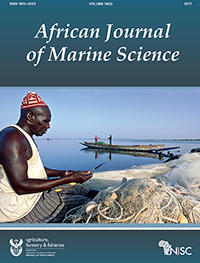Abstract:
The annual catch of octopus in the Rodrigues Lagoon, located east/north-east of Mauritius, has dropped by almost half since 1994. This has prompted concern over the resource and has initiated an assessment of the current status of the stock. The limited available biological information suggests that the main pulse of recruitment into the lagoon occurs in the first few months of the year, but that exact timing varies between years and additional staggered recruitment may occur throughout the year. Size frequency information suggests that the brooding period may be variable and extended, with a main peak between October and January. Catch-and-effort data were also limited, but a decreasing trend in catch per unit effort in two of the datasets examined allowed some preliminary within-season assessment of population size (using a depletion model) at selected landing sites. The use of a migration bias correction formula suggested a net emigration from the lagoon, which might be indicative of adult movement into deeper waters. Depletion models seem to be useful as a management tool and should be tested further against more substantial monthly catch-and-effort data. In the interim, a precautionary approach of instituting a national seasonal closure for octopus fishing following periods of peak recruitment may have both economic and conservation benefits.

















